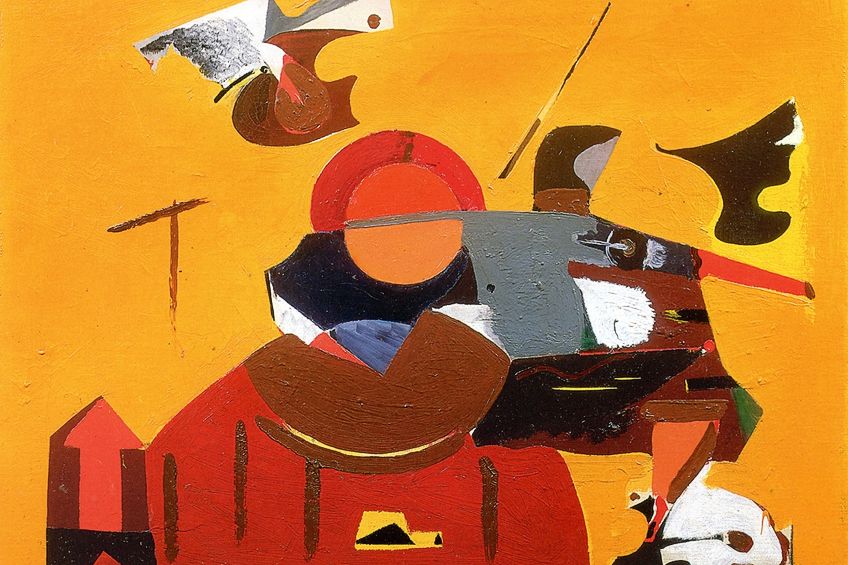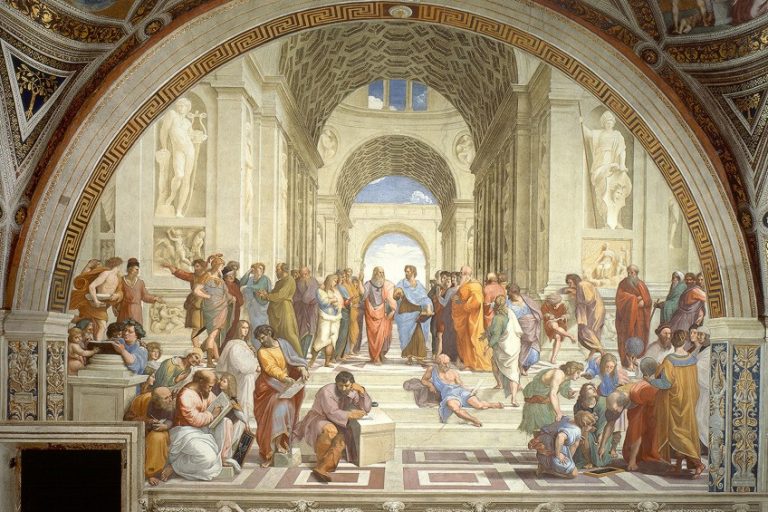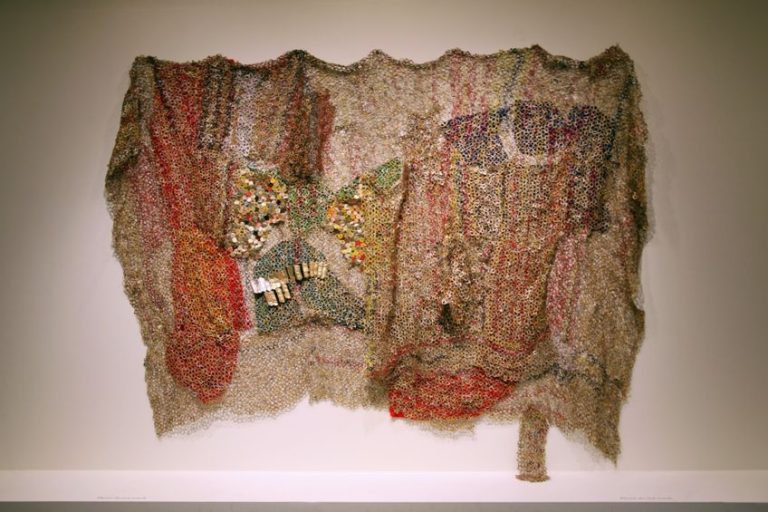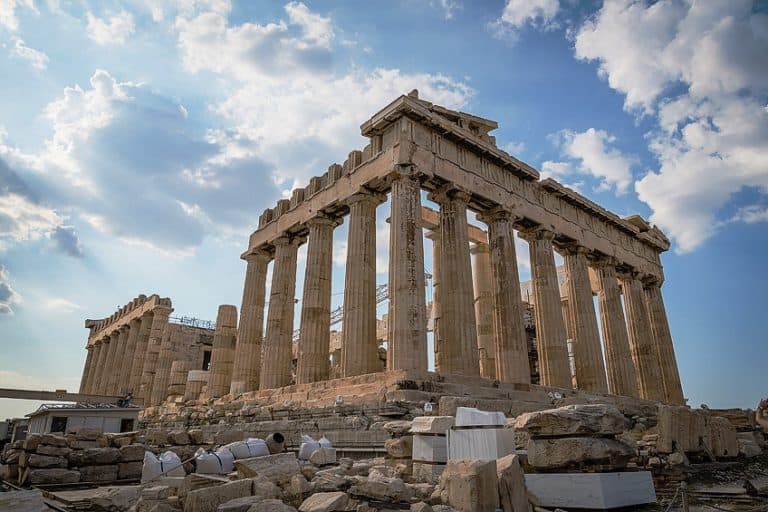Abstract Expressionism – The Artistry of the Abstract Expressionists
Abstract Expressionism was an art movement that arose in the mid-20th century in America after the end of World War II. It was said to be the first explicitly American art movement in existence, as it achieved worldwide prominence and overshadowed the grandeur of Paris as the focus of the modern Western art world. Abstract Expressionism incorporated different styles and techniques that were often unconventional and unrealistic to emphasize the freedom that artists had when conveying their attitudes and emotions. In this article, we will review the characteristics and styles of Abstract Expressionism, as well as a few key Abstract Expressionist artists who defined the movement. Read on for more about this revolutionary movement in American painting!
What Is Abstract Expressionism?
Originating in the United States, Abstract Expressionism was a post-World War II art movement that came about during the 1940s and was a new form of American Abstract art. It was considered to be very important as it was the first entirely American art movement that ever existed and carried a tremendous influence on many artists across the world, such that it took Europe off the radar as the heart of Modern art.
While the Abstract Expressionism movement spread quite rapidly across America, the hub of this style was considered to be New York City and the Californian San Francisco Bay area, where many American paintings defined the expressive style of the movement. Also known as the “New York School”, Abstract Expressionism was focused on the use of impulsive movements and expressions that were embedded in creative processes at the time.
Institutions such as the Museum of Modern Art in New York was established in 1929 and exposed the public to innovative exhibitions that showcased the works of Cubist and Abstract art, which attracted many European modernists. Among other prominent institutions that promoted modernist and abstract artworks was the Museum of Non-Objective Painting, which was then changed to the Solomon R. Guggenheim Museum.
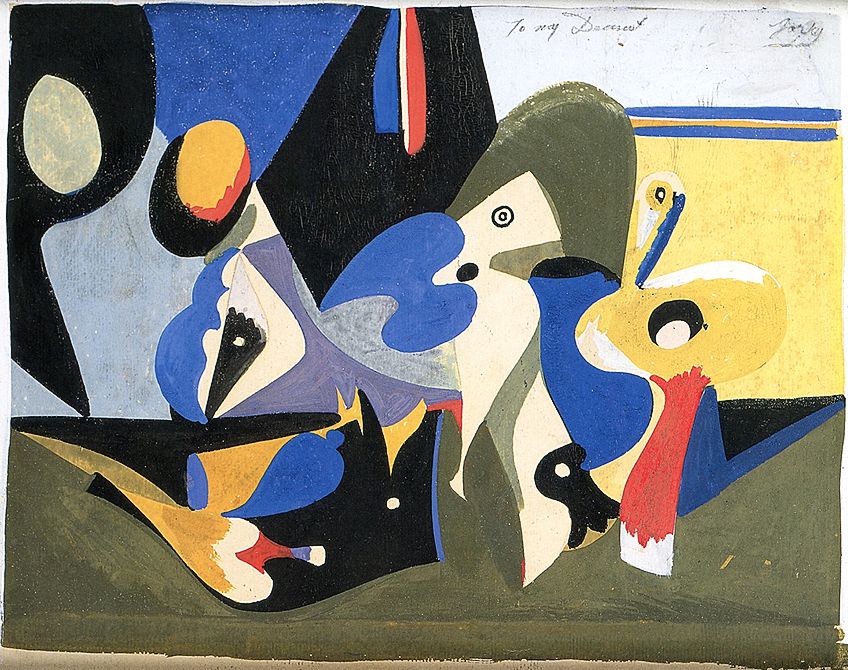
However, the movement was never considered to be a formal type of association since the artists practicing Abstract Expressionism simply shared the same common interests that were affiliated with the style. After witnessing the horrors and brutality of World War II, artists began to rebel against producing idyllic representations of life.
They felt that traditional art techniques were no longer accurate in capturing an authentic picture of life as they knew it, which was overturned in the post-war era.
Abstract Expressionist artists began exploring different ways of expressing emotions and feelings through abstract and gestural markings, as well as striking color fields. Instead of depicting figures, artists retreated into the abstract realm, where a new interest in meditation and introspection was developed and reflected in the artworks that were created. To achieve emotional impact in abstract works, color field painters works with large washes of pigments that were applied generously to canvases and incorporated action painting into their process to generate more expressive marks.
Elements such as spontaneity and improvisation were highly valued as Abstract Expressionism artists used their newfound artistic freedom to break away from established traditions across the technique and subject matter. Spurred on by this quest for liberation, artists were suddenly making large-scale works that existed as observations and representations of their individual mindsets. In addition to the influence of art institutions on the spread of Abstract Expressionism, artists who were displaced due to the aftermath of war, including Piet Mondrian, Salvador Dalí, and Max Ernst, helped rectify the American notions of Modern European art that surrounded the status of these esteemed artists and introduce techniques such as psychic automatism.

In essence, Abstract Expressionist paintings resisted stylistic categorizations but the artworks were generally grouped according to two basic preferences. The paintings either emphasized lively and spirited gestures or placed a contemplative and more cerebral focus on open fields of color.
In both instances, the images that were created in Abstract Expressionism artworks lacked clear form, including images that were based on real visual situations.
Famous Artists Who Shaped Abstract Expressionism
So, what is meant by the term “Abstract Expressionism”, and who are the key figures who shaped this revolutionary art movement? By the late 1940s, multiple factors had shifted into place that allowed for the introduction of a new artistic movement into society. Artist Clyfford Still is recognized for launching the movement in the years that followed the end of the Second World War. His artworks demonstrated a noticeable change from representational art to monumental abstract works.
With major retrospectives of works from Pablo Picasso and the reputation of modernists like Henri Matisse, American Modern art was also driven by the teachings of Hans Hofmann, who admired the styles of these two famous Modern artists. Jackson Pollock was also seen as a pioneer of the movement in 1947 with the invention of his signature drip technique and action painting, which revolutionized abstraction within art.
Willem de Kooning was another influential artist in the development of the movement. His Women series, painted between 1950 and 1953, famously eliminated the elements of composition, arrangement, light, and relationships to the point where the figures were simply seen as abstractions instead of people.
The most notable evidence of group solidarity occurred in 1951 when a group of artists boycotted an exhibition of Contemporary art that was taking place at the Metropolitan Museum of Art. Afterwards, they were coaxed into taking a photo for a magazine and were given the label “The Irascibles”. This photo, which gave artists a sense of identity and common objective, went on to popularize the term “Abstract Expressionism”, and thus the movement was solidly established.
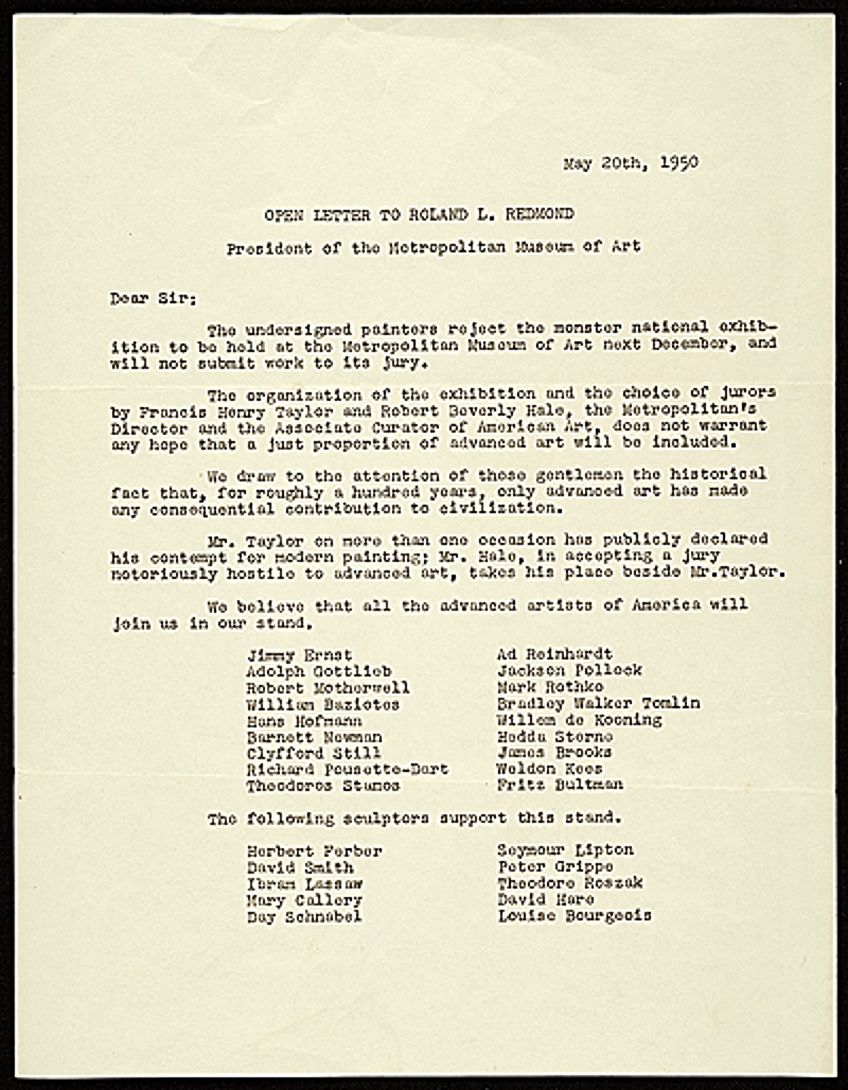
A Suitable Abstract Expressionism Definition
The movement’s term Abstract Expressionism was first used in the German magazine Der Strum in 1919 in reference to the German Expressionist movement. It was later used to describe American art in 1946 by prominent art critic Robert Coates, who used the term when talking about the paintings of Hans Hofmann, Jackson Pollock, Willem de Kooning, Arshile Gorky, and numerous other Modern artists.
The movement’s name was derived from the fusion of the intense emotions and self-denial of the German Expressionists and the non-figurative aesthetic of movements such as Futurism, Bauhaus, and Synthetic Cubism. Abstract Expressionism was considered to be a defiant, lawless, incredibly peculiar, and somewhat nihilistic movement in art, with this term being applied to artists who were mostly working in New York at the time, and who demonstrated vastly different styles in their paintings.
Essentially, an Abstract Expressionism definition was used to classify artworks that were neither completely abstract nor expressionist in nature. Both types of artworks were included under the broad label of Abstract Expressionism due to the styles displayed in the works. This was demonstrated by Jackson Pollock and Willem de Kooning, who created artworks that varied greatly but were still seen as Abstract Expressionists.

Characteristics and Influences of Abstract Expressionism
Many scholars believe that it was the American exposure to European modern art and assimilation that propelled the advancement of American Modern art itself. A great contradiction of Abstract Expressionism was that the roots of the movement were actually rooted within figurative painting, which was popularized throughout the 1930s. These artists all felt the effects of the Great Depression, with their painting styles maturing after their exposure to Social Realism and the Regionalist movements.
Due to these experiences, most artists working during that time would later go on to be classified as Abstract Expressionists based on the characteristics that were displayed in their artworks.
After World War II, the resulting political climate did not put up with the social protests that were expressed by artists within Social Realism. Abstract Expressionism eventually took over as the prevalent art movement in America, with artworks being showcased at different art galleries in New York in the early 1940s. This post-war era was a time when art was censored in America but as the subjects of Abstract Expressionism became more abstract, art was considered to be non-political, and thus, acceptable.
The Influence of World War Two on Abstract Expressionism
During the 1930s and 1940s, many European Modernists began to flee their home countries due to the Nazis’ invasion and escaped to New York to avoid the political upheaval and war that ensued. Many artists who arrived in America brought with them the ideas and practices of European Modernism and proved to be invaluable assets to the subsequent artistic developments that would later occur. Hans Hofmann was an influential painter and educator, who founded the Hans Hofmann School of Fine Arts, where he trained many prominent artists.
American artists were taught about the many European artistic techniques, such as the formal inventions of Cubism and the automatism and psychological foundations that shaped Surrealism. The Abstract Expressionists were profoundly impacted by the idea of exploring the unconscious and existential philosophies. Thus, this influx of creative activity within New York meant that American artists slowly became more knowledgeable about modern European art trends.
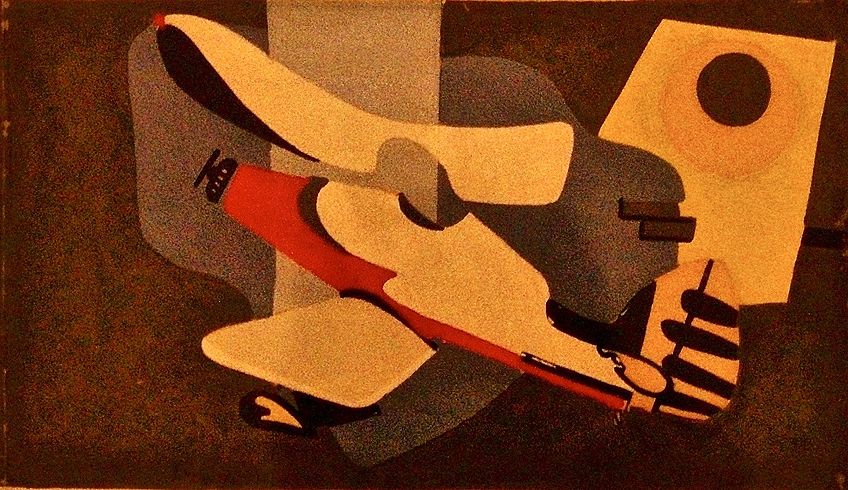
With the influence of European Modernists, the war left American artists feeling confident in transcending traditional European influences in art and soon, they started to develop a rhetoric of painting that was relevant to their own nation. Soldiers returning home from the war had witnessed the many horrible destructions, genocides, and atrocities that they could not possibly begin to talk about or understand. Artists who were drafted into the war needed an outlet to explore what they had gone through and made use of the expressive emotions and vast abstraction that defined the new art movement.
Abstract Expressionism existed as the appropriate movement at the time for artists to depict the inhumanity that was experienced in war.
Artists and other creatives were left to become apprehensive at the development of war, even in integrated and cultural areas like New York, where free thought and rationalism thrived. This paranoia was then represented in the Abstract Expressionist style that emerged, as the artworks that were produced matched the post-war atmosphere of shock and distress that had gripped society.

Thus, American artists made use of the absence that was left by European artists, who were caught up in the war and began to direct the new artistic movement. Despite this, the public was still reluctant to accept these Abstract Expressionist paintings as true works of art. It was with the help of forward-thinkers and influential art collectors such as Peggy Guggenheim that provided the movement with a wider audience and a sense of authenticity.
This ultimately allowed the movement to evolve into what it is known as today. Through the careful curation and respect for the artworks produced by the founding artists of Abstract Expressionism, the movement is preserved.
Surrealism and Abstract Expressionism
An important predecessor of the Abstract Expressionism art movement was Surrealism, which emphasized impulsive, automatic, and unconscious creation. Despite American artists displaying an unease with the blatant Freudian symbolism that was present in the Surrealist movement, they were still inspired by the great interest that was shown in the unconscious. Surrealism also centered around ideas of Primitivism and mythology, including the teachings of psychiatrist Carl Jung and his impact on recurring motifs, which were integrated into Abstract Expressionism art.
Action Painting in Abstract Expressionism
What is action painting? Abstract Expressionism was visually understood as works of art produced via color field painting and action painting. Action painting emphasizes the physical action involved when producing a painting. Well-known artists that practiced action painting include Willem de Kooning, Jackson Pollock, Franz Kline, and Philip Guston. One of the most important action painting techniques was developed in 1947 and was known as drip painting. Jackson Pollock was arguably the most famous artist who made use of this technique, as he would pour and drip thinned paint onto an unprimed canvas that he lay flat on the ground.
This was seen as quite radical at the time since Pollock abandoned traditional methods of painting in favor of splashing paint onto a canvas in a seemingly chaotic and haphazard way.
Before he started experimenting with his iconic drip paintings, Jackson Pollock displayed a great interest in primordial themes, which appeared often in his earlier works. A notable artwork that Pollock painted in 1943, She-Wolf, was said to be based on the myth of the city of Rome’s birth, which demonstrated the influence that mythology had on his art at the time. The prominence of mythology and psychological ideas in artworks was also displayed by artist Adolph Gottlieb, who frequently included archetypal symbolism in his paintings.
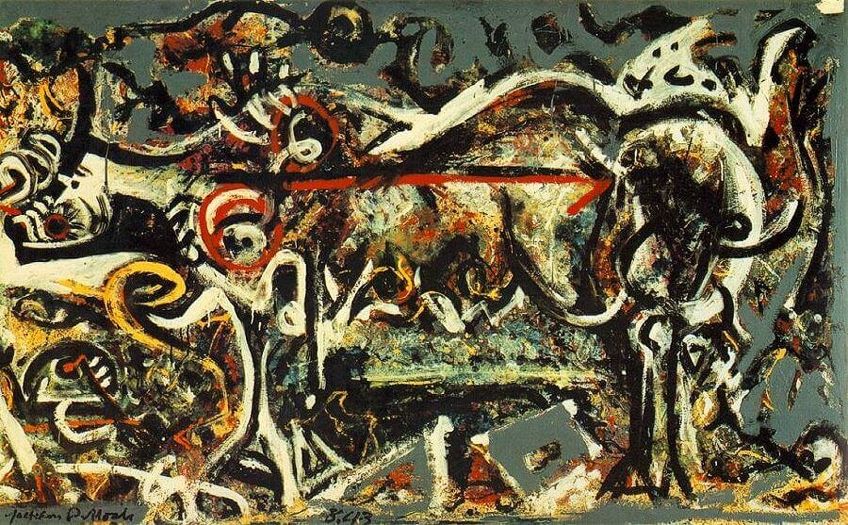
The She-Wolf (1943) by Jackson Pollock; Jackson Pollock, CC BY-SA 4.0, via Wikimedia Commons
The action painters were more focused on the physical act of painting as opposed to what they were trying to depict. This process often involved artists splashing and dripping paint onto their canvases, as well as the rough and gestural brushstrokes. Paintings that were created using the action painting technique became entirely non-objective and tumultuous.
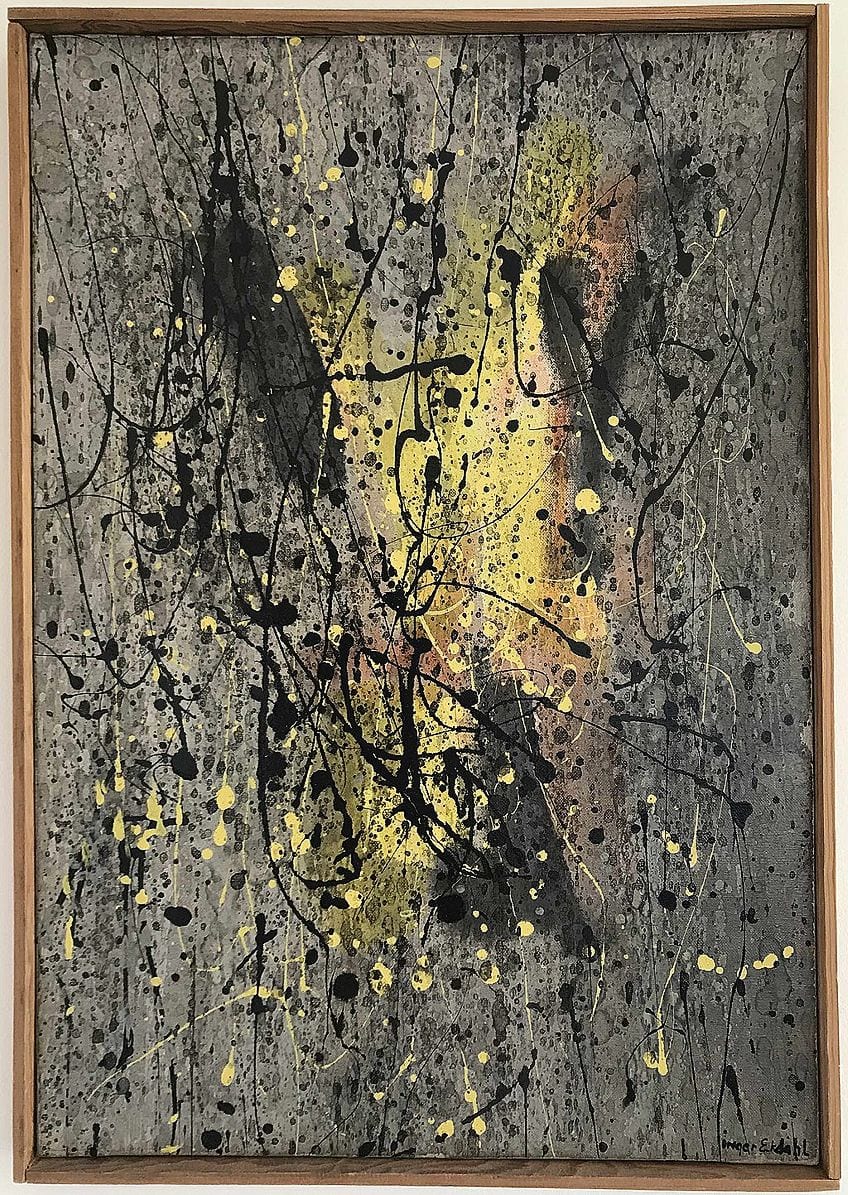
Art critic Harold Rosenberg came up with the term “action painting” in a 1952 article titled The American Action Painters. He stated that the common thread between all action painters was that they all understood that painting was only a physical manifestation of the artwork, as the process of making the piece existed as the actual work of art. The spontaneity associated with action painting was thought to represent the battle artists endured in their subconscious minds and was enacted in painting to free themselves and create purer expressions. Action painting remained popular from the 1940s until the beginning of the 1960s, when Minimalism and Pop art overshadowed Abstract Expressionism.
Color Field Painting in Abstract Expressionism
What is color field painting? The second stylistic group that dominated Abstract Expressionism was known as color field painting. This technique was most notably practiced by Mark Rothko and Kenneth Noland, who explored the effects that applications of pure color had on a canvas. The term “color field painting” was first used by critic Clement Greenberg in 1955 in reference to the paintings by Clyfford Still, Barnett Newman, and Mark Rothko. These artists created paintings using straightforward compositions with large areas occupied by single flat colors, which were meant to generate a reflective and meditative response in viewers.
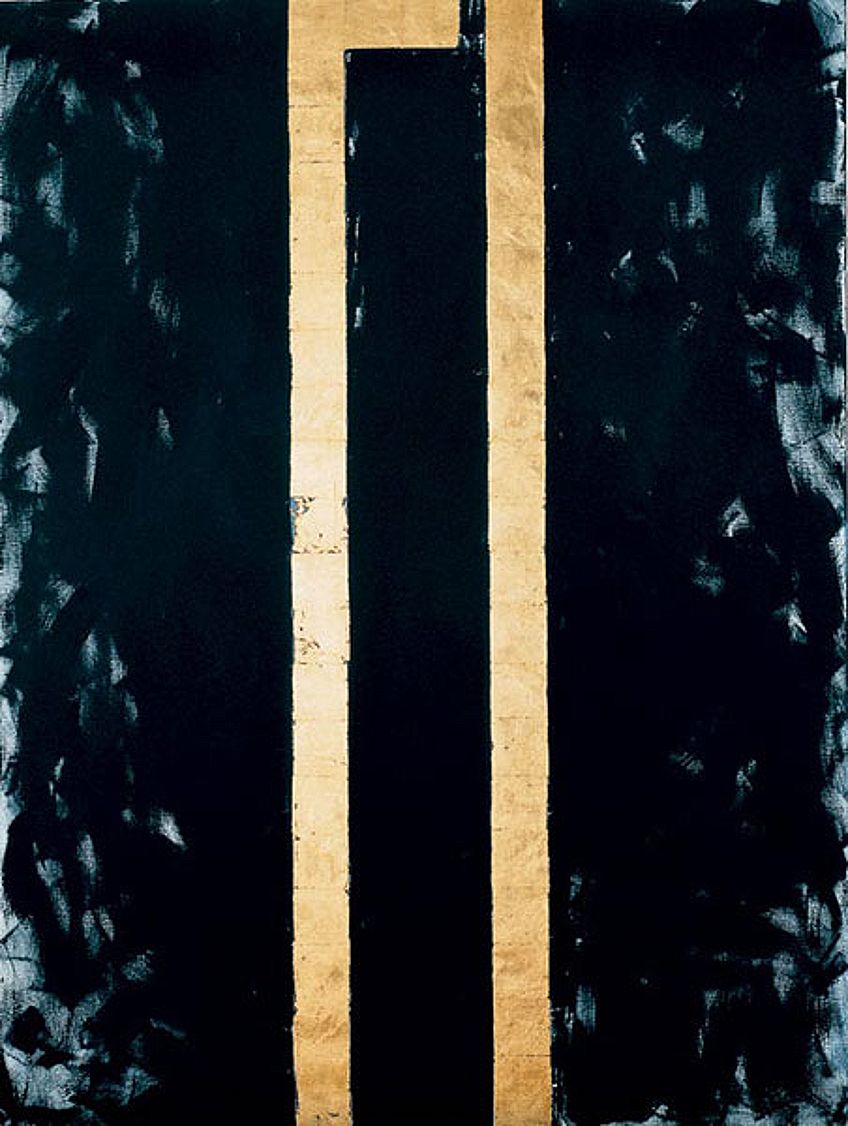
Color field artists were supposedly looking for transcendence with their extensive and emotive areas of color immersing viewers and inspiring a form of spiritual musing and powerful feelings. Within these paintings, pictorial representations were simplified to focus on and create an elemental impact with the colors used. Artists stated that their goal was to create paintings that were seen as excellent as opposed to beautiful. Concentration was reduced when it came to accurately depicting subjects, which freed artists from the outdated traditional styles of painting and allowed them to focus on the implications of color.
Paintings that were produced within the color field painting style aimed to remove the redundant and excessive rhetoric that was present in earlier artworks, with the emphasis being placed on the visual effects that color had on viewers.
Despite seeming simple, the colors used were typically complex and made up of multiple hues, which added to the depth and sincerity present in the artworks of this period.
Common Features of Abstract Expressionism
Abstract Expressionism was not always considered to be a coherent movement, as artists produced works that seemed to be beyond comparison at times. Due to this, you may be thinking “What is Abstract Expressionism? Essentially, it is an art movement in which the artworks that were created all demonstrated specific features that were typical to the general movement. These techniques have been detailed below.
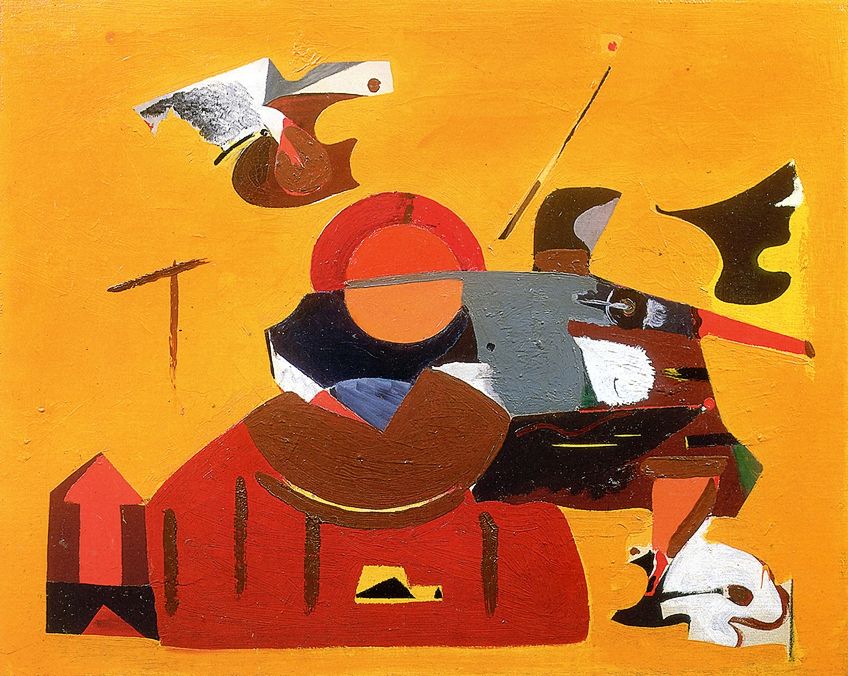
Motivation for the Movement’s Development
The era in which Abstract Expressionism began was incredibly strained due to the consequences of World War II. Artists felt incredibly limited in what they felt was appropriate to depict within their artworks, as nothing seemed authentic anymore. Therefore, Abstract Expressionism provided artists with a much-needed creative release for their suppressed feelings and thoughts.
Inspiration from Surrealism
When considering the current movement, it is easy to wonder “Which art movement was a major influence on Abstract Expressionism? The movement that both preceded and inspired Abstract Expression was the Surrealist movement. The spontaneity and interest surrounding subconscious creation motivated Abstract Expressionists to follow the flow of their feelings and to encourage the openness of their minds when creating artworks. This approach was utilized in place of first planning out a piece before artists could translate it onto a canvas.
Exploring a Range of Color
Abstract Expressionists were able to experiment with vivid and diverse colors. Artists were able to place their focus on the effect that color had within their artworks, as they became fascinated with how color was able to affect the mood and thought present.
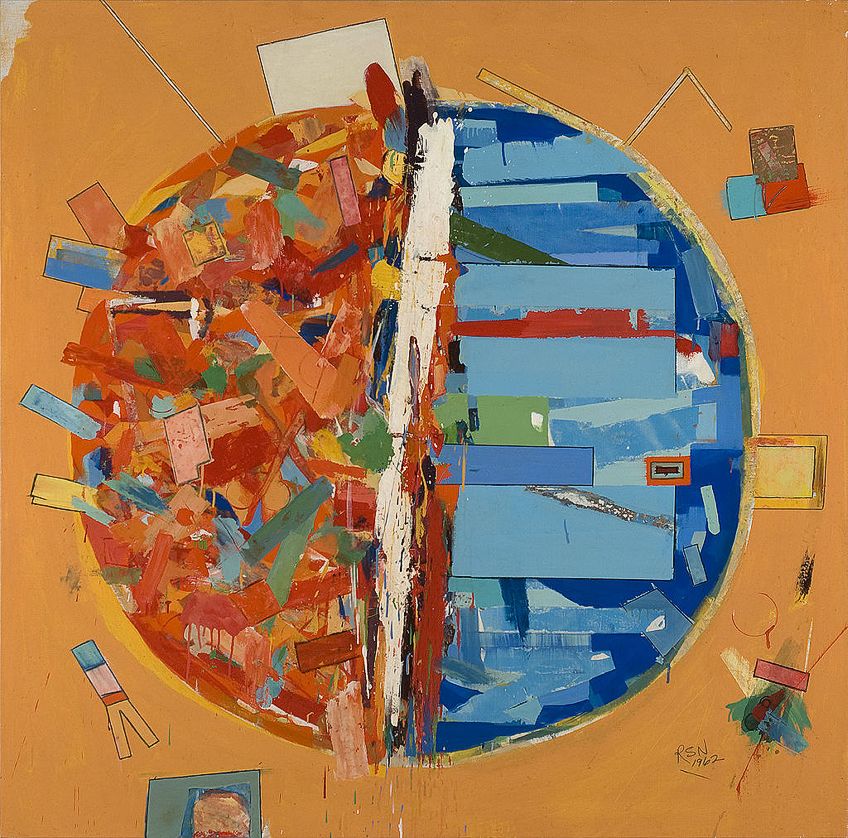
Scale of the Artworks
Abstract Expressionist paintings were typically large, with artists choosing to make use of enormous canvases on which to paint their artworks. In some cases, artists would even utilize multiple canvases that were meant to be viewed as one completed work.
Prioritizing the Perspective of the Artist
Since Abstract Expressionism was not distinguished by any one specific style, the perspectives and emotions that the artists brought into their artworks were very important. In all of the works produced within this movement, the feeling of the artists and the viewers were at the forefront of the paintings, as they were more central than the actual image that was depicted.
Important Criticism in Abstract Expressionism
During the height of Abstract Expressionism in the 1940s and 1950s, many female painters in New York and San Francisco were also producing artworks that were in line with the more publicized artworks of their male counterparts. Despite this, their involvement within the movement was largely excluded from the literature and textbooks that documented the era, owing to the widespread lack of representation across the movement.
This was because Abstract Expressionism was primarily characterized as a masculine field that was dominated by white males, who were cutting through the softer aspects of fine art.
Several female artists were also experimenting with Abstract Expressionism and were creating notable artworks, yet were consistently forgotten when considering the movement. These artists included Helen Frankenthaler, Lee Krasner, Joan Mitchell, and even Elaine de Kooning to name a few.

Similarly, many African American artists who were also practicing within Abstract Expressionism were also left out. Norman Lewis exists as a significant example since his artworks made use of many characteristics that were integral to Abstract Expressionism. Another notable artist who went unnoticed due to his race was Ed Clark, who was one of the earliest users of shaped canvases. In 2016, however, the ladies of Abstract Expressionism finally received their long-awaited recognition when the Denver Art Museum put together the traveling Women of Abstract Expressionism exhibition. This exhibition was the first major organized show that recognized these women, with over 50 important pieces being displayed.
Famous Abstract Expressionist Artists and Their Artworks
Several of the most influential artists within the Abstract Expressionist movement went on to become some of the most well-known artists throughout history. In this next section, we will explore some of the most notable Abstract Expressionism artists and artworks of the movement.
Mark Rothko (1903 – 1970)
| Artist Name | Mark Rothko |
| Date of Birth | 25 September 1903 |
| Date of Death | 25 February 1970 |
| Nationality | Latvian-American |
| Associated Movements, Themes, and Styles | Abstract Expressionism, Modern art, American Modernism, Abstract art, and color field painting |
| Medium | Painting |
Latvian-American artist Mark Rothko was a prominent member of the Abstract Expressionist movement, who was well known for his color field paintings that portrayed artistic rectangular objects of color. Rothko was famously known for producing these types of paintings, which he created between 1949 and 1970. His most famous color field painting is No. 6 (Violet, Green, Red), which he painted in 1951. In keeping with his other works of that time, this painting exemplifies the importance of Rothko’s artworks and the prominence of his style within Abstract Expressionism. Each of Rothko’s color field paintings were titled by their color differences and consisted of smooth, rectangular bands of color that stretched horizontally across the canvas.
No. 6 (Violet, Green, Red) exists as a significant example of the chromatic abstraction that was used by artists within this era, with the emphasis being placed on the brushstrokes and paint texture.
Rothko’s striking blocks of color were used to build a relationship with the conscious minds of viewers and the bright tones allowed individuals to investigate their own moods according to the color palette.
When painting, Rothko attempted to extract the essence of the colors he used, as each color was selected for a particular reason. Additionally, he wrote a series of statements that accompanied his paintings and acted as a form of explanation.
https://www.youtube.com/watch?v=bSOw5nXCJHk
Clyfford Still (1904 – 1980)
| Artist Name | Clyfford Still |
| Date of Birth | 30 November 1904 |
| Date of Death | 23 June 1980 |
| Nationality | American |
| Associated Movements, Themes, and Styles | Abstract Expressionism, Modern art, American Modernism, post-war art, and color field painting |
| Medium | Painting |
One of the leading figures of American Abstract Expressionism was Clyfford Still, who was credited with laying the groundwork for the movement. Clyfford Still’s shift from his previous artistic style to abstraction occurred much earlier than other prominent Abstract Expressionism artists like Jackson Pollock. However, in comparison to his contemporaries, Still was practically unknown for a few years, despite being seen as one of the most talented members of the movement.
One of Still’s most well-known works, which he painted in 1957, was 1957-D-No.1. This artwork forms part of the color field painting approach and demonstrates a noticeable step away from the color field paintings of other artists. Still incorporated bursts of vivid and warm colors with fine and wobbly lines to conjure up ideas of rips and gashes in his painting. This artwork evokes images of organic shapes and phenomena that remind viewers of earthly elements such as cave stalagmites. Through depicting these types of objects, Still brings the elements that are typically found beneath the surface of everyday consciousness to life.
Additionally, the color palette that Still uses in this painting plays on the concepts of light and dark, which mirror life and death.
Still’s refusal to put his artworks on display, in what he deemed to be poor quality exhibitions, caused his reputation to fluctuate despite his paintings gaining artistic achievement. Because of this, about 95% of his art collection was found in his possession when Stills passed away, with some artworks never being seen by the public before.
Willem de Kooning (1904 – 1997)
| Artist Name | Willem de Kooning |
| Date of Birth | 24 April 1904 |
| Date of Death | 19 March 1997 |
| Nationality | Dutch-American |
| Associated Movements, Themes, and Styles | Abstract Expressionism, Modern art, and action painting |
| Medium | Painting |
Another notable leader of the movement was Abstract Expressionist painter Willem de Kooning, who moved from the Netherlands to America in 1926. In addition to the artworks he created, De Kooning had a huge impact on the development of Abstract Expressionism, as he also engaged on social and intellectual levels with other artists working in the movement. One of De Kooning’s significant works created during this time was Excavation, which he painted in 1950.
Excavation exists as one of de Kooning’s most renowned works as it is the most accurate depiction of his Abstract Expressionist style, as well as being his largest painting at the time. Within the painting, we can view multiple forms that are heavily outlined. Upon closer inspection, these forms embody abstractions of familiar shapes that can be recognized after a period of observation and include shapes that resemble birds, fish, eyes, jaws, and teeth. The artwork demonstrates the expressive brushwork and organization of space that was characteristic in the majority of De Kooning’s paintings. Excavation was inspired by a picture of women working in a rice field from a 1949 Neorealist film.
The tension created between abstraction and figuration is particularly evident in most of De Kooning’s artworks.
This was thought to be based on his method of painting, whereby he would deliberately scrape, remove, and add paint until he uncovered and rendered exactly what he wanted. Thus, within Excavation, the final artwork represents a true excavation of De Kooning’s mind, as he remains one of the most gestural action painters of Abstract Expressionism.
Barnett Newman (1905 – 1970)
| Artist Name | Barnett Newman |
| Date of Birth | 29 January 1905 |
| Date of Death | 4 July 1970 |
| Nationality | American |
| Associated Movements, Themes, and Styles | Abstract Expressionism, Modern art, color field painting, hard-edge painting, and Abstract art |
| Medium | Painting |
American artist Barnett Newman was an important member of the Abstract Expressionist movement, who was also one of the leading figures of color field painting. Newman’s paintings were known for their ability to express a sense of locality and contingency. Out of his paintings, his best-known work was possibly Vir Heroicus Sublimis (1950-1951), which translates to “Man, Heroic, and Sublime”.
Vir Heroicus Sublimis exists as one of Newman’s largest paintings of the time and portrays a completely red surface that is divided twice by two vertical lines, which the artist called “zips”. Newman intended for audiences to view his painting from a close vantage point to allow the colors to fully enclose viewers.
Newman believed that his vast use of such a vibrant color spoke to the inherent chemistry that occurs when two people meet for the first time, as the same intense feelings are stirred when viewing his artwork.
Although the immense size and simplicity of the artwork adds to its importance as an Abstract Expressionist work, the connection that Newman was able to create between the painting and viewers through the use of color is notable.
Norman Lewis (1909 – 1979)
| Artist Name | Norman Wilfred Lewis |
| Date of Birth | 23 July 1909 |
| Date of Death | 27 August 1979 |
| Nationality | American |
| Associated Movements, Themes, and Styles | Harlem Renaissance, Abstract Expressionism, and Modern art |
| Mediums | Painting and education |
One of the most important African American painters was Norman Lewis, whose artworks were mostly ignored by galleries and museums throughout his career. Despite this, his contribution to Abstract Expressionism was undeniable.
A recent retrospective that was held at the Pennsylvania Academy of Fine Arts, along with his inclusion in a massive Abstract Expressionist exhibition in the United Kingdom began to reverse the exclusion of his work within art history.
One of his most significant paintings was Evening Rendezvous, which he painted in 1962. Lewis used his art as a place for him to escape and to work through the emotionally charged experiences of being a man of color in America. Evening Rendezvous is known for its distinctive use of red, white, and blue hues, with Lewis’ color palette indicative of the American flag. The white figures, although abstracted, are said to conjure up images of hooded Klansmen gathered around a fire.
Lewis’ artwork was based on the pretense of patriotism that existed in America during that time, which was further demonstrated by the Civil Rights Act that began two years later. The background in Evening Rendezvous typifies Lewis’ use of atmospheric rinses of color to govern the mood he was attempting to create and was exemplified by the somber mood that exists within this painting.
Franz Kline (1910 – 1962)
| Artist Name | Franz Kline |
| Date of Birth | 23 May 1910 |
| Date of Death | 13 May 1962 |
| Nationality | American |
| Associated Movements, Themes, and Styles | Abstract Expressionism, Modern art, and action painting |
| Medium | Painting |
The visual language created by American artist Franz Kline in his artworks was unlike that of any of his peers, which made him an important influence within Abstract Expressionism. The techniques he used, as well as his spirited energy when painting, accurately embodied the principles of the movement, which added to his prominence as an action painter. One of Kline’s notable works from this period, painted in 1950, was Chief.
Kline began his career in figuration and often projected large images of his drawings onto walls when he started painting. After blowing up an image too large one day, only a fraction of the picture appeared in bold and dense black strokes. Kline was so taken aback by the abstraction that was present in this section of the image that he began to focus solely on portraying abstract figures and elements in his artworks.
The contrasting black and white sections of Chief have been the subject of speculation for many years, as no solid idea seemed to exist about what object Kline abstracted when creating this artwork. It was believed that the excessive use of the color black, which appeared often in Kline’s other works, was related to his childhood spent in a coal-mining community.
Using large brushes and household paint to create his works, Kline’s paintings became almost completely unrecognizable from their original subject.
However, the vibrancy and energy with which he created his compositions seemed to connect them to the titles that Kline gave them, making his paintings prominent examples of action paintings. No matter how lively and urgent Kline’s paintings appeared to be, they were always carefully thought out and planned in their implementation.
Jackson Pollock (1912 – 1956)
| Artist Name | Paul Jackson Pollock |
| Date of Birth | 28 January 1912 |
| Date of Death | 11 August 1956 |
| Nationality | American |
| Associated Movements, Themes, and Styles | Abstract Expressionism, Modern art, action painting, and the drip technique |
| Medium | Painting |
One of the names most synonymous with the Abstract Expressionist movement was that of American artist Jackson Pollock, who was made famous through his drip painting technique. Although not the first artist to employ this technique, Pollock was acknowledged as the artist who was able to most successfully incorporate this technique into his artworks.
Pollock went on to employ this technique in most of his Abstract Expressionist paintings, which are all still well-known today.
One of Pollock’s significant pieces is his Autumn Rhythm (Number 30) painting, created in 1950. Making use of the infamous drip technique, Pollock poured and splattered paints from a height onto an unprimed canvas that lay on the ground. This process of painting was thought to express his internal emotional turmoil, as Pollock was known for his volatile personality. Pollock incorporated gestural lines and textures in his compositions, which represented a breakthrough for Pollock and his career. In addition to his erratic process of painting, Pollock stopped giving his paintings evocative titles early on in his career. Instead, he began to simply number his paintings since he considered numbers to be more neutral. In doing so, Pollock believed that this would allow viewers to experience the purity of the painting without referring to a predetermined title.
Helen Frankenthaler (1928 – 2011)
| Artist Name | Helen Frankenthaler |
| Date of Birth | 12 December 1928 |
| Date of Death | 27 December 2011 |
| Nationality | American |
| Associated Movements, Themes, and Styles | Abstract Expressionism, post-painterly abstraction, lyrical abstraction, color field painting, and Modern art |
| Medium | Painting |
One of the most notable female artists in Abstract Expressionism was American artist Helen Frankenthaler, who was introduced to the New York art scene by her friend and art critic Clement Greenberg. Frankenthaler spent an entire summer studying under Hans Hoffmann, even viewing Jackson Pollock’s debut exhibition, before becoming an active member of the Abstract Expressionist movement. Frankenthaler’s career lasted over six decades, with her being one of the few artists to span several generations of Abstract Expressionists.
Her most notable artwork, painted in 1952, was Mountains and Sea. This was one of her most important works since it was one of the first major paintings that she ever created. In addition to its colossal size, Mountains and Sea reflects Frankenthaler’s deviation from traditional mediums and surfaces, and the beginning of her signature technique.
Additionally, this artwork exists as an important color fields painting due to the manipulation of colors employed by Frankenthaler.
Instead of treating paint as a layer that sat on top of the canvas, Frankenthaler thinned her oils and acrylics with turpentine to achieve the consistency of watercolors. After placing her unprimed canvas on the floor, Frankenthaler poured, dripped, sponged, mopped, and rolled the paint onto the Mountains and Sea canvas to lightly apply her toned-down washes. The effect that this created was one of strain, as the paint completely sunk into the canvas and took on a transparent effect.
This process allowed Frankenthaler both control and spontaneity within her artworks, with this combination existing as the key principle of Abstract Expressionism. Mountains and Sea was inspired by a trip that Frankenthaler took to Nova Scotia, as demonstrated by the apparent light and radiance that she achieved in this artwork.
The Legacy of Abstract Expressionism
Between 1943 and the early 1950s, the first generation of the Abstract Expressionist movement boomed. After this, it seemed as though the artistic genre had seemingly run its course. This was because the movement’s biggest achievements were built on the conflict between chaos and control that existed in society, which could only be expressed and played out in a variety of ways. Artists such as Mark Rothko and Barnett Newman evolved abstract art into such a reductive style that no room for improvement existed, with the style slowly fading out by the 1960s.
This led the way for a new form of art to develop, propelled on by younger artists who were less pressured to produce one exquisite work after the next. Artists such as Andy Warhol and Robert Rauschenberg felt less inclined to follow in the footsteps of such an overtly masculine movement and began to produce art according to a new style through a queered lens. The effect that Abstract Expressionism had on art was that it shifted the world’s focus from Europe to America, which helped establish New York as the cultural and artistic hub that it is today. Despite the topics and ideas that informed Abstract Expressionism losing their power to compel the newer generations of artists that were emerging, the legacy and contribution of the movement remains significant.
The Abstract Expressionism movement propelled many artists practicing within this genre to experiment with a variety of techniques inspired by Surrealism and exposure to European Modernism. Through art, artists were able to reveal the psyche of society that was so traumatized by World War II, while piloting revolutionary art styles that would change the face of Modern art forever.
Frequently Asked Questions
What Is Abstract Expressionism?
A segment of Abstract art, Abstract Expressionism refers to a 20th century art movement that emerged after World War II in New York City during the 1940s. The movement was defined by the development of new abstract forms of making art that was shaped by the presence of gestural marks to emphasize movement in art.
What Are the Characteristics of Abstract Expressionism?
The main characteristics of Abstract Expressionism includes the display of free and spontaneous brush strokes created using different gestural painting techniques. Such art is often non-representational and showcase the immediacy of gestural marks.
What Techniques Are Used in Abstract Expressionism?
The two main techniques used in Abstract Expressionism includes action painting and color field painting. Action painting is used to create spontaneous patterns in art and is also called gestural abstraction, while color field painting involves the use of large areas of an artwork covered in a flat color that usually portray geometric shapes. The best examples of both techniques can be seen the works of Mark Rothko and Jackson Pollock.
Isabella studied at the University of Cape Town in South Africa and graduated with a Bachelor of Arts majoring in English Literature & Language and Psychology. Throughout her undergraduate years, she took Art History as an additional subject and absolutely loved it. Building on from her art history knowledge that began in high school, art has always been a particular area of fascination for her. From learning about artworks previously unknown to her, or sharpening her existing understanding of specific works, the ability to continue learning within this interesting sphere excites her greatly.
Her focal points of interest in art history encompass profiling specific artists and art movements, as it is these areas where she is able to really dig deep into the rich narrative of the art world. Additionally, she particularly enjoys exploring the different artistic styles of the 20th century, as well as the important impact that female artists have had on the development of art history.
Learn more about Isabella Meyer and the Art in Context Team.
Cite this Article
Isabella, Meyer, “Abstract Expressionism – The Artistry of the Abstract Expressionists.” Art in Context. May 10, 2021. URL: https://artincontext.org/abstract-expressionism/
Meyer, I. (2021, 10 May). Abstract Expressionism – The Artistry of the Abstract Expressionists. Art in Context. https://artincontext.org/abstract-expressionism/
Meyer, Isabella. “Abstract Expressionism – The Artistry of the Abstract Expressionists.” Art in Context, May 10, 2021. https://artincontext.org/abstract-expressionism/.


